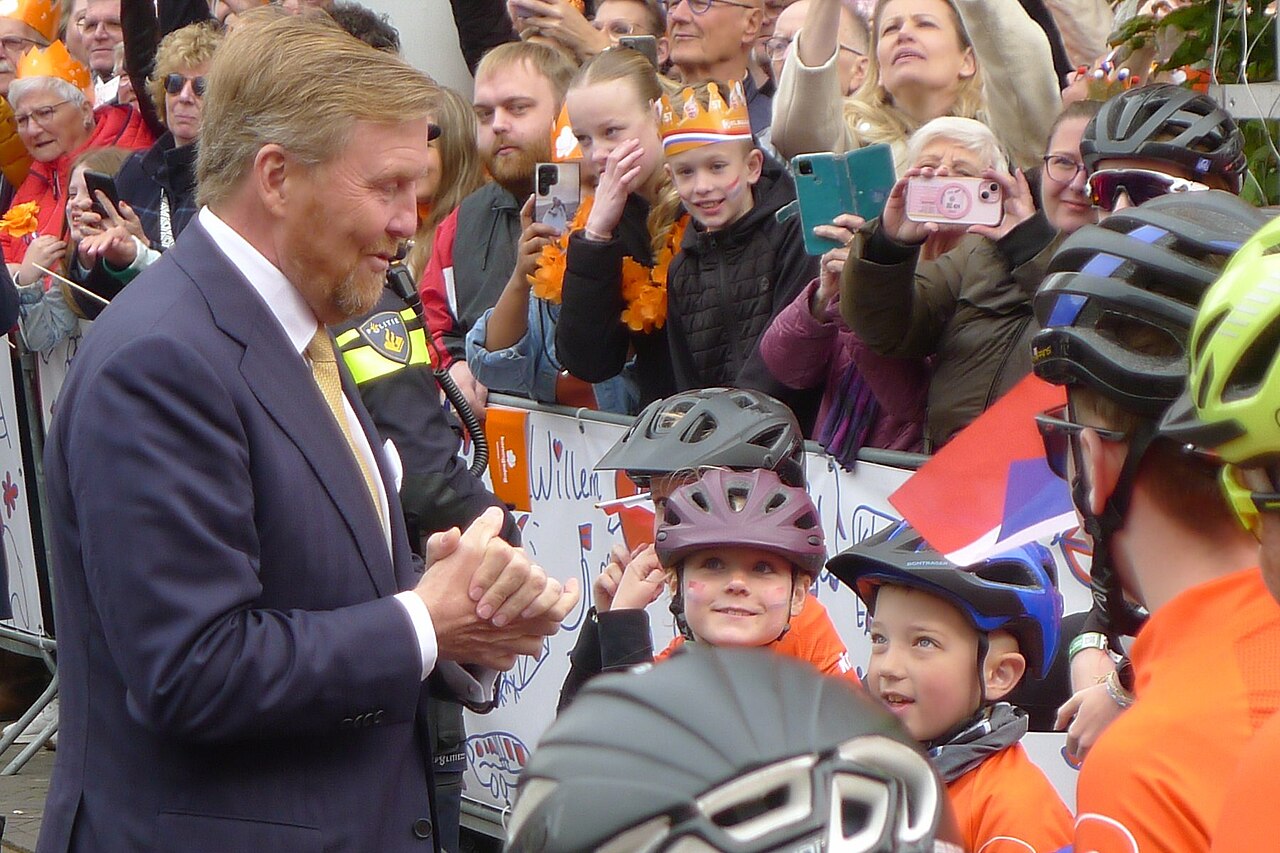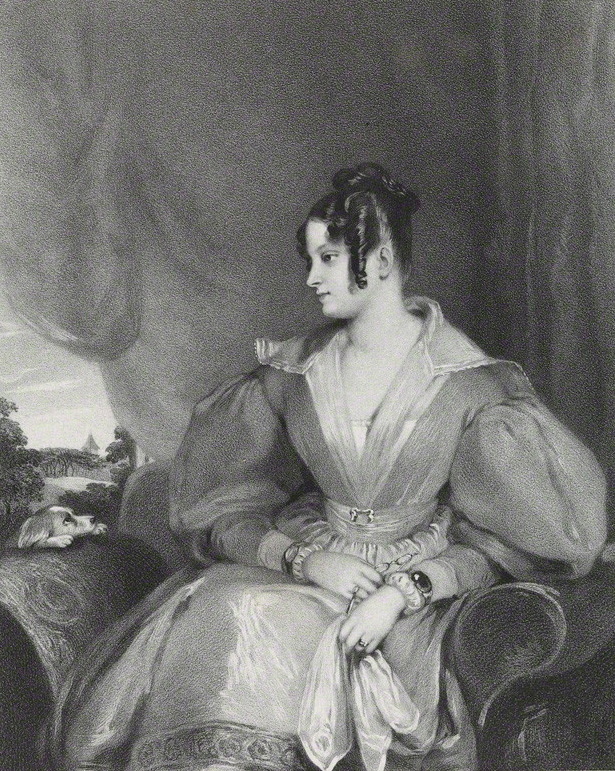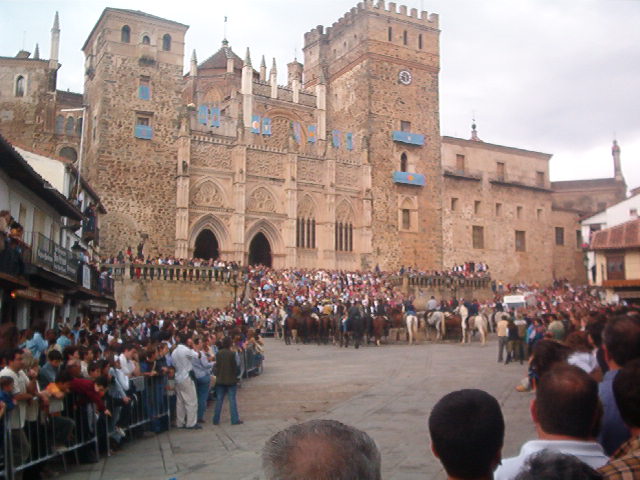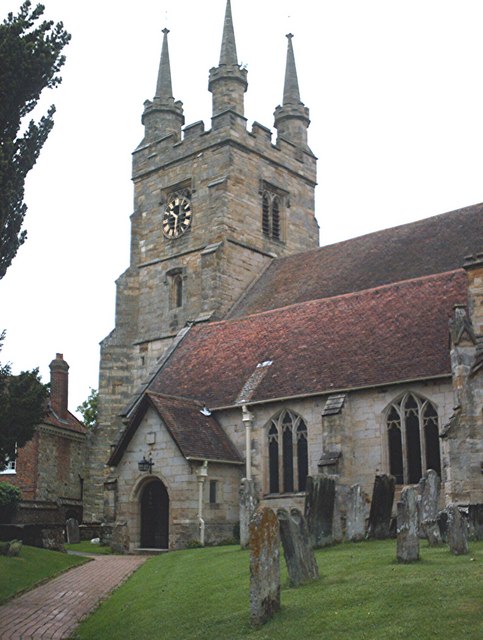by Susan Flantzer
© Unofficial Royalty 2024
Elizabeth Hay, Countess of Erroll was born Elizabeth FitzClarence, the sixth of the ten children and the third of the five daughters of the future King William IV of the United Kingdom and his mistress Dorothea Jordan, on January 17, 1801, at Bushy House in the London Borough of Richmond upon Thames. Elizabeth’s paternal grandparents were King George III of the United Kingdom and Charlotte of Mecklenburg-Strelitz. Francis Bland, a stagehand, and his mistress Grace Phillips, an actress were her maternal grandparents.
From 1790 until 1811, before he became king, King William IV of the United Kingdom had a long-term relationship with actress Dorothea Jordan. Their relationship resulted in ten children who were given the surname FitzClarence. The surname comes from the Anglo-Norman word Fitz, meaning “son of” and Clarence, from King William IV’s title before he became king, Duke of Clarence.
Dorothea Jordan was born Dorothea Bland was born in County Waterford, Ireland, the daughter of Francis Bland, a stagehand, and his mistress Grace Phillips, an actress. Her mother encouraged Dorothea to enter the theater, and within a few years, she began to draw large crowds for her performances. She left Ireland in 1782 and moved to Leeds, England. It was at this point that she took the name Jordan. She performed for three years with the York Company, before being lured away in 1785 to move to the Royal Theatre, Drury Lane in London. By then, Dorothea was becoming a very popular performer and could be counted on to bring large crowds every night. It was at Drury Lane that her life would come to the attention of The Duke of Clarence several years later.


Elizabeth’s parents The Duke of Clarence (later King William IV) and Dorothea Jordan
In 1790, Dorothea was first noticed by The Duke of Clarence (later King William IV) while performing at Drury Lane. They quickly began an affair that would last for the next 21 years. Dorothea moved in with the Duke at his home, Clarence Lodge in Roehampton, London, England and later they moved to Bushy House in Bushy Park in Richmond upon Thames, London, England.
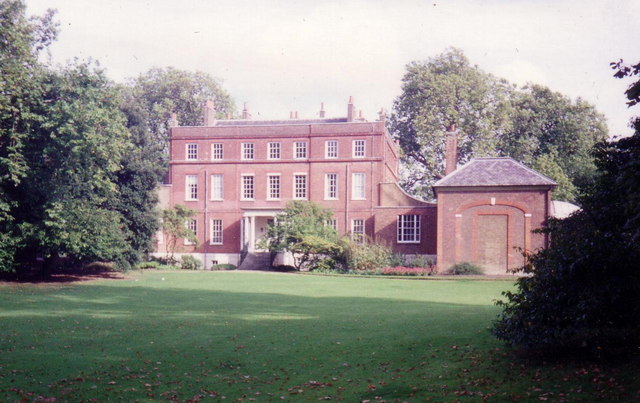
Bushy House, Elizabeth’s birthplace; By Stephen Williams, CC BY-SA 2.0, https://commons.wikimedia.org/w/index.php?curid=12574949
In 1797, King George III of the United Kingdom appointed his third son William, then Duke of Clarence, the ranger of Bushy Park. The position came with the residence Bushy House in Bushy Park. William and Dorothea lived there with their ten children until their relationship ended in 1811. William continued living there with his children and later with his wife Adelaide Saxe-Meinigen after they married in 1818.
The children of King William IV and Dorothea Jordan had an elder half-brother, William Henry Courtney, born around 1788 to an unknown mother, and named after his father whose given names were William Henry. Dorothea Jordan cared for William, and she was fond of him and he was fond of her. William served in the Royal Navy from 1803 until 1807 when his ship HMS Blenheim was lost in a gale off Madagascar. Despite an extensive search, no trace of the ship was ever found. 590 men were lost aboard HMS Blenheim, including King William IV’s eldest illegitimate son nineteen-year-old William Henry Courtney.
Nine of the ten children of King William IV and Dorothea Jordan were named after nine of William’s fourteen siblings. The tenth child was given William’s middle name Henry.
Elizabeth’s nine siblings:
- George FitzClarence, 1st Earl of Munster (1794 – 1842), married Mary Wyndham, had seven children
- Henry Edward FitzClarence (1795 – 1817), unmarried, died at age 22
- Sophia FitzClarence (1796 – 1837), married Philip Sidney, 1st Baron De L’Isle and Dudley, had four children
- Mary FitzClarence (1798 – 1864), married Charles Fox, no children
- Frederick FitzClarence (1799 – 1854), married Lady Augusta Boyle, had two children
- Adolphus FitzClarence (1802 – 1856), unmarried
- Augusta FitzClarence (1803 – 1865), married (1) The Honorable John Kennedy-Erskine, had three children; married (2) Admiral Lord Frederick Hallyburton, no children
- Augustus FitzClarence (1805 – 1854), Sarah Elizabeth Catharine Gordon, had six children
- Amelia FitzClarence (1807-1858), married Lucius Bentinck Cary, 10th Viscount Falkland, had one son
William and Dorothea’s children married into the British aristocracy and their many descendants include some notable people including sisters Princess Alexandra, Duchess of Fife and Princess Maud, Countess of Southesk (granddaughters of King Edward VII and daughters of Princess Louise, Princess Royal and Alexander Duff, 1st Duke of Fife, a descendant of Dorothea Jordan and King William IV), Duff Cooper, 1st Viscount Norwich (British diplomat, Cabinet member, author), John Crichton-Stuart, 7th Marquess of Bute (also known as Johnny Dumfries, racing driver), and David Cameron, Prime Minister of the United Kingdom.
By 1811, William was pressured by his family to find a suitable wife. At the time he was fourth in line for the throne following his elder brother The Prince of Wales, the future King George IV, George’s only child Princess Charlotte of Wales, and George’s next oldest brother who was childless Prince Frederick, Duke of York. William gave in to the pressure and ended his relationship with Dorothea but he ensured she was well provided for. William became closer to the throne when his niece Princess Charlotte died in 1817 giving birth to a stillborn son. When King George IV died in 1830, William succeeded to the throne. Although William had ten children with Dorothea Jordan, his marriage with Adelaide of Saxe-Meiningen produced no surviving children. King William IV was succeeded by his niece Queen Victoria. Queen Victoria had relationships with her first cousins, King William IV’s illegitimate children. They are mentioned in Queen Victoria’s diaries when visiting Windsor Castle.
Elizabeth and her siblings had little contact with their mother Dorothea Jordan after 1811 when their father ended his relationship with her. After losing much of her savings when her daughter Augusta and her husband ran up large debts in her name, Dorothea’s health quickly began to decline. Virtually penniless, Dorothea Jordan died in Saint-Cloud, France on July 5, 1816, at the age of 54. She is buried in the local cemetery in Saint-Cloud.

Elizabeth’s husband William Hay, 18th Earl of Erroll; Credit – Wikipedia
On December 4, 1820, nineteen-year-old Elizabeth married another nineteen-year-old, William George Hay, 18th Earl of Erroll, the son of William Hay, 17th Earl of Erroll and Alice Eliot. William became the 18th Earl of Erroll when his father died on January 26, 1819. The Earls of Erroll held and still hold the hereditary office of Lord High Constable of Scotland and the hereditary title of Chief of Clan Hay.
Elizabeth and William had four children:
- Lady Ida Hay (1821 – 1867), one of Queen Victoria’s bridesmaids, married Charles Noel, 2nd Earl of Gainsborough, had five children
- William Hay, 19th Earl of Erroll (1823 – 1891), married Eliza Gore, had seven children
- Lady Agnes Hay (1829 – 1869), married James Duff, 5th Earl Fife, had five children including Alexander Duff, 1st Duke of Fife who married Princess Louise, Princess Royal, daughter of King Edward VII
- Lady Alice Hay (1835 – 1881), unmarried
Elizabeth’s husband William had several appointed and political positions. In 1823 he was elected a Scottish representative peer and took his seat in the House of Lords. He was Master of the Horse to Queen Adelaide from 1830 to 1834. In 1831 he became a member of the Privy Council. He served as Master of the Buckhounds, a political position, from 1835 to 1839. From 1839 to 1841, William was Lord Steward of the Household. William was also Knight Marischal of Scotland from 1832 to 1846 and Lord-Lieutenant of Aberdeenshire from 1836 to 1846.

St. Mary’s Church, Wimbledon by John Salmon, CC BY-SA 2.0, https://commons.wikimedia.org/w/index.php?curid=128451986
William Hay, 18th Earl of Erroll, aged forty-five, died of diabetes complications, on April 19, 1846, in London, England. He was buried in the churchyard of St. Mary’s Church in Wimbledon, London Borough of Merton, Greater London. Elizabeth survived her husband by a little less than ten years, dying on January 16, 1856, aged 54, in Edinburgh, Scotland. She was buried with her husband at St. Mary’s Church in Wimbledon.
Elizabeth’s entry at www.findagrave.com gives an account of her death from the London Evening Standard, 17 Jan 1856, page 2. Several relatives are mentioned in the article:
- Mr. J Duff was James Duff, Elizabeth’s son-in-law, in 1857, he became the 5th Earl Fife after his childless uncle James Duff, 4th Earl Fife died
- Lady Agnes Duff was Elizabeth’s daughter, the wife of James above
- Lady Mary Fox was Elizabeth’s sister, born Mary FitzClarence
- The Earl of Erroll was Elizabeth’s son William Hay, 19th Earl of Erroll
- Lady Augustus FitzClarence was Elizabeth’s sister-in-law, born Sarah Gordon, the wife of Elizabeth’s brother Lord Augustus FitzClarence
- Viscount Campden was Elizabeth’s son-in-law, later Charles Noel, 2nd Earl of Gainsborough. Viscount Campden was the courtesy title of the heir of the Earl of Gainsborough
- Viscountess Campden was Elizabeth’s daughter Ida, later Countess of Gainsborough, wife of Charles Noel above
DEATH OF THE COUNTESS DOWAGER OF ERROLL
We regret to announce the death of the Countess Dowager of Erroll, daughter of the late King William IV and Ms Jordan. The melancholy event took place at five minutes to eleven o’clock yesterday forenoon at Edinburgh, being at the time her ladyship was on her way south to hasten to the sick bed of her brother, Lord Adolphus Fitzclarence.
The deceased countess had left Mr J. Duff, M.P., and Lady Agnes Duff’s seat in the north of Scotland, and on Saturday last stayed at Wemyss Castle, Dysart, and reached Edinburgh on Tuesday, where her ladyship was taken very unwell. The symptoms became alarming, and Lady Mary Fox, and the other relatives, received a telegraphic message early on Monday morning, conveying the intelligence that the countess was lying in a very dangerous state. Lady Mary Fox left town by the express train on Tuesday evening, and had the consolation of being with her sister at her dissolution, which happened at the hour before named without any apparent paint. We believe the countess died from congestion of the brain. Lady Augustus Fitzclarence, her sister-in-law, and Lady Agnes Duff were, among the other members of the family, present at her death, and the Earl of Erroll and Viscount and Viscountess Campden were also sent for when her ladyship was considered in imminent danger.
This article is the intellectual property of Unofficial Royalty and is NOT TO BE COPIED, EDITED, OR POSTED IN ANY FORM ON ANOTHER WEBSITE under any circumstances. It is permissible to use a link that directs to Unofficial Royalty.
Works Cited
- Beauclerk-Dewar, Peter & Powell, Roger. (2006). Right Royal Bastards – The Fruits of Passion. Burke’s Peerage & Gentry LLC.
- Flantzer, Susan. (2015). King William IV of the United Kingdom. Unofficial Royalty. https://www.unofficialroyalty.com/king-william-iv-of-the-united-kingdom/
- Lady Elizabeth Fitzclarence Hay (1801-1856) -… (2015). Findagrave.com. https://www.findagrave.com/memorial/153734491/elizabeth-hay
- Mehl, Scott. (2020). Dorothea Jordan, Mistress of King William IV of the United Kingdom. Unofficial Royalty. https://www.unofficialroyalty.com/dorothea-jordan-mistress-of-king-william-iv-of-the-united-kingdom/
- Weir, Alison. (2008). Britain’s Royal Families – The Complete Genealogy. Vintage Books.
- Wikipedia Contributors. (2018). Elizabeth Hay. Wikipedia; Wikimedia Foundation. https://en.wikipedia.org/wiki/Elizabeth_Hay
- Wikipedia Contributors. (2022). William Hay. Wikipedia; Wikimedia Foundation. https://en.wikipedia.org/wiki/William_Hay









